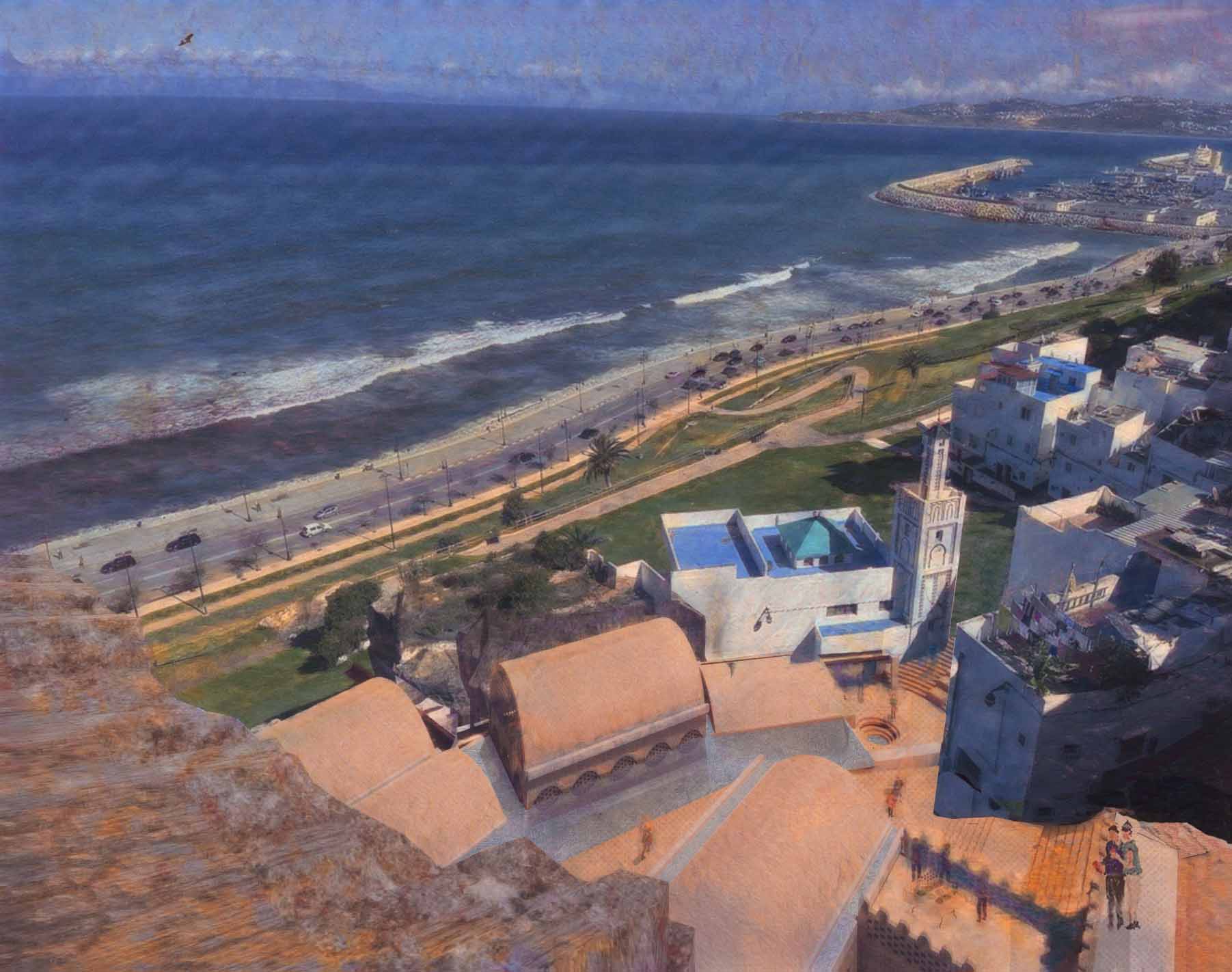
Tangier Time Zones: Material Crossings
Studio leader: Ana Bonet Miró. Tutor: Samer Wanan
At the tip of Africa and within sight of Spain, Tangier is a vital contact zone shaped by dreams and practices of crossing. A disputed strategic garrison and an exotic destination for expatriates, the city endures a complex colonial history. It entered the European imagination after the 1870s through photographs, paintings, postcards, and travelogues, while legations, schools, hospitals, hotels, cafés, and theatres swiftly irrupted into the urban landscape. Today, Tangier has evolved into a global infrastructure hub. Yet amidst the flow of commodities and tourists, a landscape of micro-practices reveals the inventiveness of everyday life.
How might Tangier’s cultural history activate our architectural explorations? How can we introduce friction through design? What form might a material contact zone take? Inspired by the legacy of architect Cedric Price, we approached these questions by making time visible in our work. This meant exploring colonial media as practice, designing forms as timelines, and considering architectures as intervals—while engaging critically with incrementality, ephemerality, flexibility, adaptive reuse, design for disassembly, and degrowth.
Ultimately, the experience of being in touch with Tangier transformed our own modes of architectural production. Participating in this complex site of crossing means being affected by its transformative energy.





![Project Overview [Aqua Dialoges [Re]Commoning Waterscape]_Kim Lee](/sites/default/files/styles/header_image/public/2025-05/Aqua%20Dialoges%20%5BRe%5DCommoning%20Waterscape.jpg?itok=BrfJNrFN)




